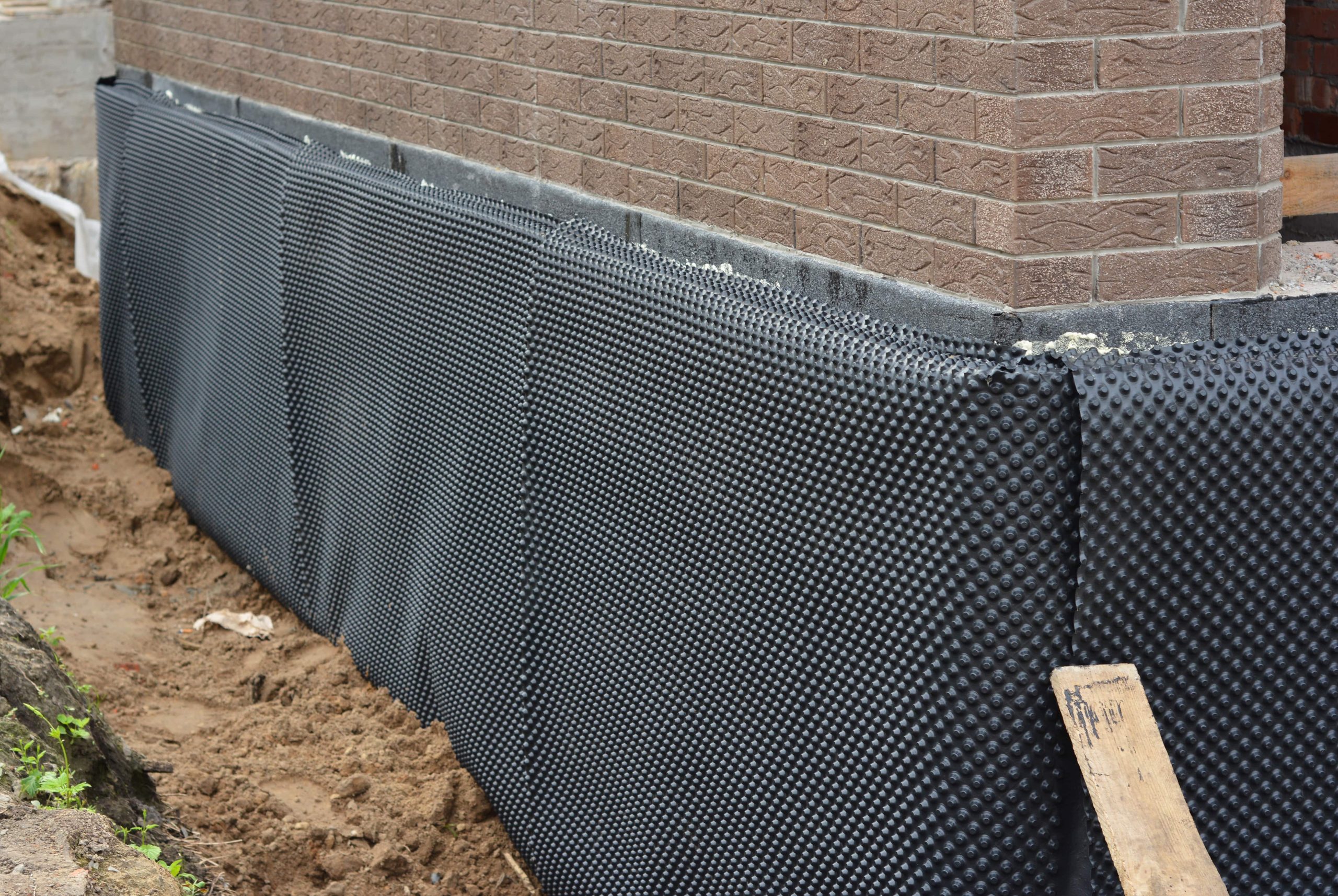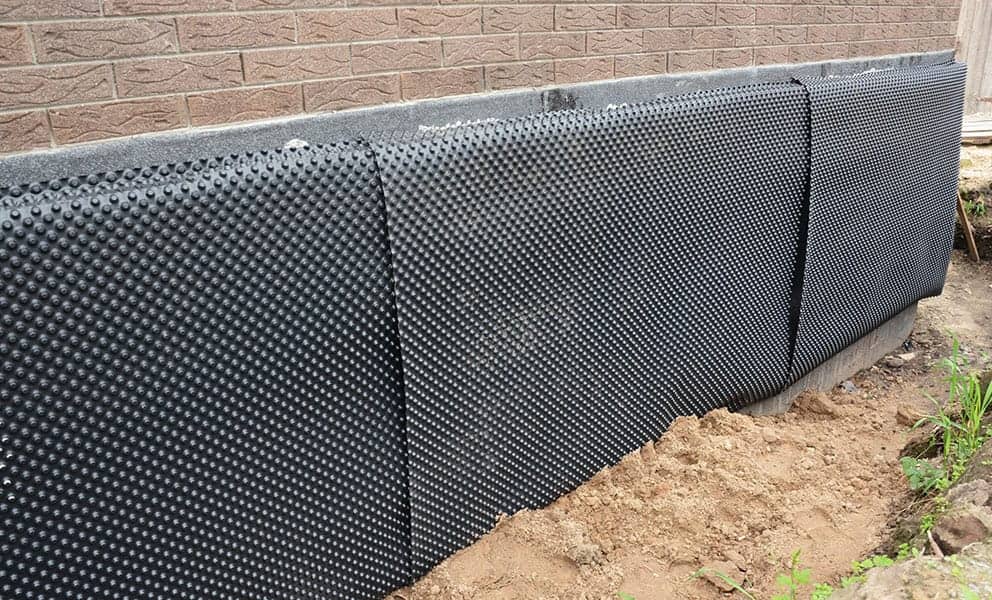All you need to know about choosing the qualified damp specialist newcastle for your home
All you need to know about choosing the qualified damp specialist newcastle for your home
Blog Article
Discovering the Different Strategies and Solutions for Effective Damp Proofing
Dampness in structures poses considerable difficulties to both architectural integrity and interior air top quality. Various methods and remedies have emerged to fight this prevalent issue. From conventional damp-proof membrane layers to cutting-edge chemical treatments, each method supplies distinct benefits. Recognizing these options is crucial for effective moisture control. Picking the appropriate option depends on specific building conditions and demands, triggering additional expedition right into the most reliable damp proofing techniques offered.
Recognizing the Reasons For Moisture
Although wetness can arise from various resources, understanding these reasons is vital for efficient removal. Generally, moisture originates from three key resources: increasing moist, permeating damp, and condensation. Rising wet happens when groundwater travels upwards through porous products, such as brick or rock, commonly because of a lack of an effective barrier (damp specialist newcastle). Penetrating wet is normally created by outside elements, including roof covering leakages, damaged gutters, or harmed wall surfaces, permitting water to penetrate a home. Condensation, on the various other hand, arises from excess wetness airborne, commonly intensified by inadequate ventilation and temperature level distinctions, resulting in water droplets basing on surface areas. Determining these underlying concerns is vital, as each kind of moisture calls for a tailored approach for remediation. Proper analysis helps in establishing the most reliable solutions, ultimately guarding the structural stability of a structure and enhancing indoor air top quality
Traditional Damp-Proof Membranes

Chemical Damp-Proofing Solutions
Chemical damp-proofing solutions provide a cutting-edge strategy to avoid dampness breach in structures. These approaches generally include the application of liquid chemicals that penetrate stonework and create a barrier versus climbing wet. Commonly used chemicals include silanes, siloxanes, and other water-repellent agents that react with surface area products to produce a hydrophobic layer.The application procedure normally needs boring holes into the walls, infusing the chemical remedy, and enabling it to treat. This method is particularly advantageous for older frameworks where standard damp-proof membranes may be impractical. Furthermore, chemical damp-proofing can be much less turbulent and a lot more economical than extensive remodelling projects.While effective, these solutions rely on appropriate application and environmental conditions for peak efficiency. Routine upkeep and tracking are important to ensure the longevity of the damp-proofing therapy. Generally, chemical damp-proofing stands for a flexible option for protecting buildings versus moisture-related damage
Dental Caries Wall Construction Techniques
Cavity wall surface building and construction strategies offer countless advantages, specifically in moisture control and energy performance. By incorporating an air void in between 2 layers of masonry, these wall surfaces successfully mitigate water ingress while boosting insulation. This combination not just shields structures from wetness but likewise adds to decreased power intake.
Benefits of Tooth Cavity Wall Surfaces
When thinking about efficient moist proofing approaches, the advantages of tooth cavity walls attract attention prominently. Cavity walls consist of two separate layers, producing an air space that effectively reduces wetness penetration. This style lessens the danger of wetness, as the external wall surface works as a barrier versus rainfall and water access. Additionally, cavity wall surfaces enhance thermal insulation, which contributes to energy effectiveness by lowering warmth loss. They also offer sound insulation, assisting to create a quieter indoor environment. The air gap permits for air flow, which helps in wetness control and decreases the possibility of mold growth. These advantages not only improve the total convenience of a building but additionally add to its long life and architectural honesty.
Moisture Control Methods
Efficient moisture control techniques are essential in cavity wall building to ensure long-term defense against wetness. One key method entails the consolidation of weep holes, which assist in water drainage from the cavity, protecting against accumulation. In addition, the use of breathable membranes can assist handle wetness degrees while permitting trapped vapor to run away. Appropriate positioning of insulation is also vital, as it needs to not block drain paths. Additionally, making sure that the outer fallen leaves of the tooth cavity wall are built with waterproof materials improves overall durability. Regular maintenance checks are important to recognize any blockages or damages early, guarding the structure's integrity. Ultimately, a mix of these strategies creates a durable protection against moisture breach in cavity walls.
Insulation and Energy Efficiency
Insulation plays an important function in improving energy effectiveness within dental caries wall surface construction. By incorporating insulating products, these wall surfaces develop a thermal obstacle that decreases warmth loss and minimizes energy usage. Efficient insulation not only helps keep a secure interior temperature level yet likewise alleviates the risk of dampness, as it protects against condensation within the wall surface dental caries. Numerous strategies, such as making use of stiff foam boards or mineral wool, can be utilized to achieve ideal insulation efficiency. Additionally, correct installment is necessary to ensure that spaces and voids are reduced, which can or else endanger energy efficiency. Inevitably, a well-insulated tooth cavity wall surface adds considerably to overall sustainability and decreases home heating and air conditioning prices for home owners.
Outside Damp Proofing Methods
External wet proofing techniques are important for protecting frameworks from moisture seepage. 2 reliable techniques include the application of water-proof membranes and the installation of French drains pipes. These remedies aid reduce water build-up and preserve the stability of structures.
Waterproof Membrane Layer Application
While various approaches exist for avoiding moisture access, the application of waterproof membranes stays an extremely effective exterior damp proofing method. These membrane layers are normally made from products such as polyethylene, rubber, or customized bitumen, providing a robust obstacle versus water penetration. The setup procedure involves applying the membrane to the external surface areas of structures or walls, ensuring total coverage to avoid leakages. Correct attachment and sealing at joints are essential to making best use of effectiveness. Waterproof membranes can be applied in different kinds, consisting of fluid finishings and sheet membrane layers, enabling flexibility based on the specific requirements of the structure. This method not only safeguards buildings from moisture yet additionally boosts their longevity and structural integrity.
French Drain Installation
One effective method for managing groundwater and stopping moisture buildup around a building's foundation is the installation of a French drain. This drainage system is composed of a trench loaded with crushed rock and a perforated pipeline that redirects surface area water far from the structure. Appropriate installation requires mindful preparation, ensuring that the drainpipe inclines far from the structure to facilitate perfect water flow. Furthermore, the location of the drain is vital; it should be positioned in locations vulnerable to merging or excess wetness. Routine maintenance, including clearing up particles from the crushed rock and guaranteeing the pipe remains unobstructed, is important for long-term performance. Inevitably, a well-installed French drainpipe can considerably decrease the threat of water-related problems in basements and structures.
Interior Waterproofing Strategies
Inside waterproofing approaches are crucial for safeguarding a structure's interior from dampness infiltration and possible water damage. These methods usually include the application of specialized products and techniques created to create a dampness barrier within the framework. One typical approach is making use of waterproof finishes or sealants on wall surfaces and floorings, which avoid dampness from penetrating surfaces.Additionally, mounting indoor drain systems, such as sump pumps, can successfully handle water buildup in cellars and crawl spaces. An additional technique involves making use of vapor barriers, which are set up to hinder dampness movement from the ground right into living spaces.Moreover, dealing with any type of fractures or voids in wall surfaces or foundations with appropriate sealants assures a complete defense versus water intrusion. By carrying out these indoor waterproofing techniques, homeowner can substantially minimize the threat of mold and mildew development, architectural damages, and other moisture-related concerns. Proper execution of these techniques is important for long-lasting security and structure honesty.
Normal Upkeep and Examination Practices
Normal upkeep and examination techniques are vital for assuring the lasting effectiveness of damp proofing solutions in any building. Regular checks make it possible for homeowner to determine early indications of moisture intrusion, such as peeling paint, mold and mildew development, and mildewy odors. These signs can indicate underlying issues that call for prompt attention.Inspections need to be performed a minimum of every year, concentrating on vulnerable locations like cellars, crawl spaces, and outside wall surfaces. During these assessments, homeowner ought to analyze sealants, drainage systems, and air flow to validate they work correctly.Additionally, maintaining downspouts and rain gutters is crucial, as clogged up systems can result in water accumulation near the structure. Carrying out a routine upkeep routine, together with prompt fixings, can significantly extend the lifespan of damp proofing actions and safeguard the structural honesty of the structure. Proactive measures inevitably add to the general health and wellness and safety and security of the living atmosphere.
Regularly Asked Concerns
For How Long Does Damp Proofing Commonly Last?
The duration of moist proofing effectiveness varies, commonly lasting in between 20 to half a century. Elements such as application top quality, environmental conditions, and upkeep techniques substantially influence the durability of the moist proofing therapy.

Can I Damp Proof My Home Myself?
The private considered the expediency of DIY damp proofing. With proper study and the best materials, it is feasible. Nevertheless, they likewise recognized the value of specialist guidance to assure long-lasting performance and prevent future concerns.
What Are the Indications of Ineffective Damp Proofing?
Signs of inefficient moist proofing consist of consistent musty odors, noticeable mold and mildew development, peeling paint, damp patches on walls, and wood degeneration - mould removal newcastle. Homeowners must attend to these concerns immediately to prevent additional damages and wellness issues
Does Damp Proofing Affect Indoor Air High Quality?

Exactly How Much Does Specialist Damp Proofing Price?
Expert wet proofing expenses differ significantly, normally ranging from $1,000 to $5,000 relying on the building's dimension, the extent of the damp concern, and chosen methods. Each circumstance calls for a customized analysis for accurate prices. Commonly, dampness originates from 3 main sources: climbing damp, permeating wet, and condensation. When considering efficient wet proofing methods, the advantages of dental caries wall surfaces stand out prominently. External moist proofing techniques are essential for safeguarding frameworks from dampness seepage. While various methods exist for protecting against dampness ingress, the get more info application of waterproof membrane layers remains a very efficient exterior moist proofing strategy. Indications of inadequate moist proofing consist of persistent stuffy odors, noticeable mold and mildew development, peeling paint, wet patches on wall surfaces, and wood decay.
Report this page